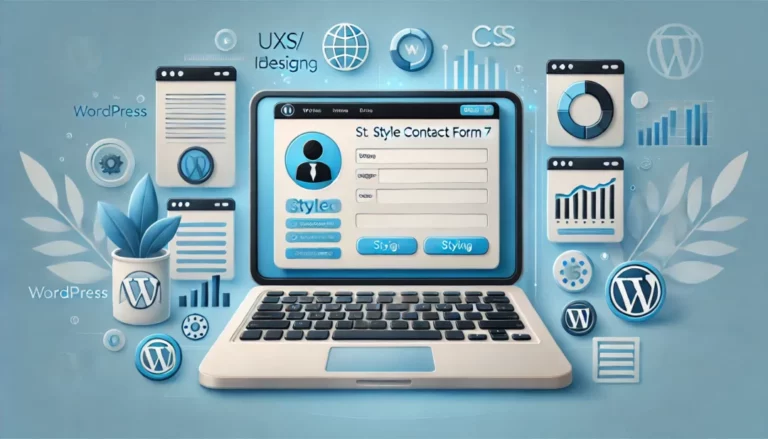
Adding captions to images in WordPress enhances your content’s clarity and appeal, helping readers better understand your visuals. Whether you’re showcasing products, sharing tutorials, or simply boosting engagement, captions play a vital role in elevating your website’s user experience. The good news? It’s a straightforward process that doesn’t require technical expertise.
You’ll start by uploading or selecting an image in your WordPress Media Library. From there, you’ll locate the caption field and add your desired text. Once done, insert the image into your post or page, and your caption will appear seamlessly beneath the image. It’s that simple! With just a few clicks, you can make your content more informative and visually engaging.
Why Add Captions To Images In WordPress?
Captions improve the accessibility and visual appeal of your content. By providing context or additional details, captions make images more meaningful for users. Search engines can also use captions to better understand your content, which can enhance SEO performance.
Enhancing User Engagement
Captions grab attention and encourage readers to stay on your page longer. For example, an image with a descriptive caption can clarify your message, increase comprehension, and build a connection between text and visuals.
Improving Accessibility
Visually impaired users relying on screen readers benefit from well-structured captions. Captions provide alternative information, supplementing alt text, which supports inclusivity.
Boosting SEO Rankings
Search engines consider captions while crawling your site. Including keywords naturally in captions improves visibility in image search results. For example, tagging a product image with relevant captions helps its discoverability.
Streamlining Content Navigation
Captions help visitors scan content more effectively. Users can quickly grasp the topic of an image without needing to read the entire text. For instance, in a tutorial, captions under steps’ images provide clear context.
Adding captions combines functionality, accessibility, and SEO benefits, ensuring a positive impact on user experience.
Methods To Add Captions To Images In WordPress
Adding captions to images in WordPress enhances clarity, improves accessibility, and boosts SEO. Below are three practical methods for adding captions based on image upload workflows and post editing processes.
Adding Captions While Uploading Images
- Access the Media Library
Navigate to the post or page editor in WordPress and click the Add Media button.
- Upload Your Image
Click Upload Files, select an image from your device, and wait for it to upload.
- Add a Caption in the Attachment Details
Locate the Caption field in the right-hand sidebar of the Media Library. Enter your desired caption text.
- Insert the Image
After adding the caption, click Insert Into Post to place the image in your content. The caption appears directly below the image when published.
Adding Captions To Existing Images In The Media Library
- Open the Media Library
In your WordPress dashboard, click Media and select Library.
- Edit the Image
Find the image you want to caption and click on it to open the Attachment Details.
- Enter or Edit Caption Text
Use the Caption field on the right side to input or update the caption. Ensure the text is relevant and concise.
- Save Changes
Click Save or close the details window. Updates automatically apply to all instances where the image is used.
- Insert an Image Into a Post
Open the desired post or page in the WordPress editor. Use the Add Media button or the Image block to insert the image.
- Click Below the Image
In the editor, click directly below the image to reveal the Write a caption… placeholder.
- Type the Caption
Enter your caption text in the placeholder. Style or format the text if necessary, using editor options.
- Save and Update the Post
Click Update or Publish to save your changes. The caption appears beneath the image in the published content.
These methods provide flexibility for managing captions, whether you’re adding captions upfront, editing existing entries, or working directly in posts.
Tips For Writing Effective Image Captions
1. Keep Captions Concise And Relevant
Write captions that are short, precise, and directly tied to the image. Avoid unnecessary information or overly long descriptions. For instance, if the image shows a laptop on a desk, a caption like “Modern workspace with a laptop and minimalist setup” is more effective than a lengthy narrative.
2. Incorporate Keywords Strategically
Add relevant keywords to captions to enhance SEO. This helps search engines understand your content and boosts visibility in image search results. For example, include terms like “WordPress tutorial,” “responsive design,” or “creative workspace” if relevant to your image and post.
3. Add Context To Complement The Image
Use captions to provide details that aren’t immediately apparent. Explain the significance of the image or its role in the content. For example, “Example of a successful homepage design for a WordPress blog” clarifies how the image connects to your content topic.
4. Maintain A Conversational Yet Professional Tone
Ensure captions are engaging while staying professional. Speak directly to viewers like, “Discover how this WordPress theme optimizes usability,” to make readers feel included.
5. Match Caption Style With Your Brand Voice
Align caption formatting and tone with your website’s branding. A formal site might require detailed, structured captions, while a casual blog can use more playful or lighthearted language.
6. Use Proper Grammar And Spelling
Proofread captions before publishing to eliminate errors. For example, confirm punctuation, sentence structure, and spelling accuracy to maintain credibility and professionalism.
7. Test Captions For User Engagement
Experiment with different phrasing to see which captions enhance user interaction. For instance, modify captions on popular posts and track any changes in engagement through analytics.
Troubleshooting Common Caption Issues
Resolving caption problems ensures a seamless user experience and maintains the visual integrity of your WordPress content. Below are actionable solutions for the most frequent caption-related issues.
1. Captions Not Displaying on the Frontend
Ensure captions are visible if they don’t appear on your live site. First, check your theme’s compatibility with WordPress captions by switching to a default theme like Twenty Twenty-Three to test. If captions appear, the issue lies with your current theme, potentially in its CSS or template files. Contact your theme developer or edit the stylesheet to include proper caption styling.
2. Broken Layout Around Image Captions
Resolve layout distortions caused by improperly styled captions. Identify styling conflicts by inspecting the webpage through the browser’s developer tools. Look for .wp-caption or .wp-caption-text classes and adjust padding, margin, or alignment settings in your theme’s custom CSS. Always back up your site before editing styles.
3. Incorrect Caption Alignment
If captions are not aligning as intended, set alignment using the WordPress Editor. Select the image in the editor, then choose alignment options (left, center, or right) from the toolbar. For persistent alignment issues, override conflicting CSS rules for .wp-caption in your theme files.
4. Formatting Errors in Captions
Fix formatting issues like line breaks or HTML rendering incorrectly in captions. Avoid using unsupported HTML tags in the caption field. Use plain text or tested HTML formatting, such as <strong>, <em>, or links, ensuring no extra spaces or unclosed tags.
5. Captions Missing After Importing Images
Recover missing captions when importing from external media sources or backups. Ensure the captions were included in the original metadata. Re-add captions manually if metadata did not transfer, or utilize plugins like “Export Media With Selected Content” for better metadata handling during transfers.
6. Captions Affecting Page Load Time
Reduce page-loading delays caused by captions or their styling elements. Compress image files and optimize their load time without affecting quality. Use caching plugins to enhance performance, especially for pages with multiple images and captions.
7. SEO Impact of Missing Captions
Optimize captions for SEO if search engines ignore your images. Include relevant keywords naturally in captions. Ensure captions match the context of the image and relate to the surrounding content.
8. Mobile Display Problems
Fix display issues where captions or images don’t render correctly on mobile devices. Test responsiveness using WordPress Preview Mode and inspect for improper scaling or clipping. Customize your theme’s media queries under Appearance > Customize > Additional CSS, targeting screen-specific adjustments.
Addressing these issues maintains consistent formatting, improves user experience, and boosts SEO performance.
Conclusion
Adding captions to your WordPress images is a simple yet powerful way to enhance your content’s accessibility, engagement, and SEO performance. By taking advantage of WordPress’s flexible tools and following best practices for crafting effective captions, you can create a more meaningful experience for your audience.
Whether you’re adding captions to new images, updating existing ones, or troubleshooting display issues, these small efforts can have a significant impact. Captions not only provide context but also strengthen your content’s overall appeal, making your site more user-friendly and visually engaging.
Start incorporating captions into your workflow today to elevate your content and maximize its potential.
Frequently Asked Questions
1. Why should I add captions to images in WordPress?
Captions enhance content clarity, improve user experience, and boost SEO performance. They provide context for images, make content more accessible, and help users grasp information quickly. Captions can also increase engagement and improve inclusivity for visually impaired users.
2. How do captions improve SEO for my WordPress site?
Captions contribute to SEO by incorporating relevant keywords that search engines analyze when crawling your site. Including optimized captions can improve image search visibility and overall site rankings.
3. Can I add captions to existing images in WordPress?
Yes. You can edit captions for existing images in the Media Library. Select the image, update the caption in the Attachment Details, and save the changes.
4. Can I add captions directly in WordPress posts or pages?
Yes. While editing a post, click below the inserted image and type the caption text. This allows you to add captions directly within the post editor.
5. What makes a good image caption?
A good image caption is concise, relevant, includes keywords for SEO, and provides additional context for the image. It should also maintain a natural tone, match the brand voice, and follow proper grammar.
6. How do I fix captions not displaying on the frontend?
Check your theme settings and CSS to ensure captions are supported and styled correctly. Update your theme or switch to one that fully supports caption functionality.
7. Do captions improve accessibility for users?
Yes. Captions provide context for images, enhancing accessibility for all users, particularly those with visual impairments. They complement alt text, ensuring inclusivity.
8. Will adding captions slow down my WordPress site?
Captions themselves don’t impact page speed. However, ensure images are optimized for size and format to avoid slow load times.
9. How can I write captions that boost user engagement?
Write engaging, concise captions that align with the image’s context. Test different phrasing to determine what grabs attention and encourages users to explore your content.
10. Why are captions missing after importing images to WordPress?
Imported images may not retain captions if metadata isn’t fully transferred. Manually update captions in the Media Library to fix the issue.



